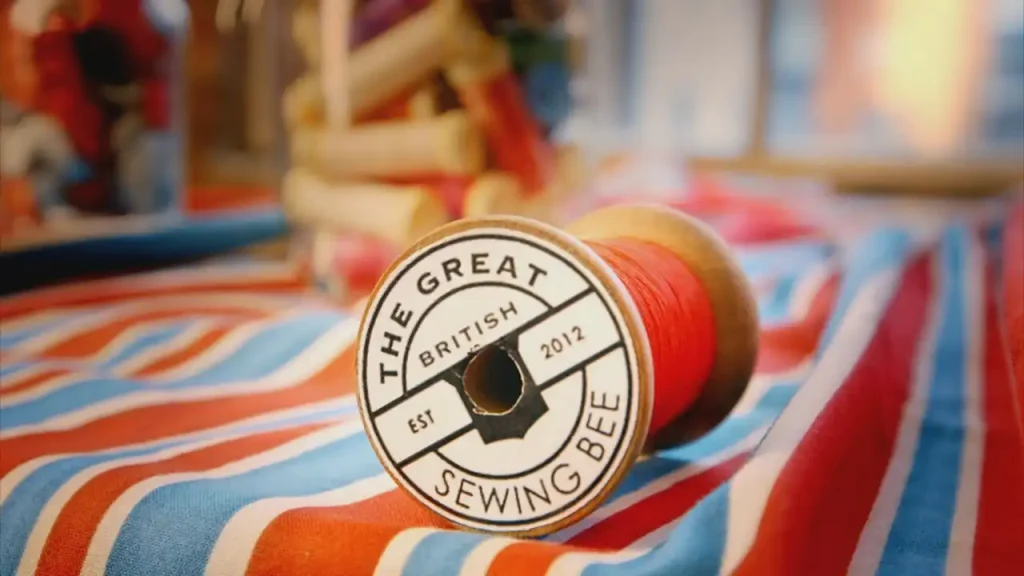
The Great British Sewing Bee Season 5 Episode 7 – In the penultimate episode, hosted by the ever-charismatic Joe Lycett, the tension is palpable as the four outstanding contestants embrace the intricate world of international fashion in the competition’s semi-final. They’re challenged not just by the stakes, but by the incredibly complex array of garments and sewing techniques drawn from the four corners of the globe. To start, the semi-finalists confront a task that’s set to test their skills like never before.
Under the discerning eyes of expert judges Patrick Grant and Esme Young, they’re tasked with crafting a pair of traditional Indian dhoti pants. This garment, deeply rooted in the heritage of Indian clothing, requires them to master the art of manipulating and shaping vast, uncut lengths of fabric into the iconic wide-legged, intricately pleated pants. It’s an endeavor that’s as challenging as it is visually spectacular, marrying historical technique with modern design sensibility.
The competition heats up further with the second challenge, a test of innovation and quick thinking—the transformation challenge. Here, the contestants face the vibrant essence of West African style as they deconstruct and repurpose a Dashiki. This men’s tunic, renowned for its vivid hues and emphatic patterns, becomes the canvas for their creativity. With only 90 minutes on the clock, they must ingeniously integrate the Dashiki’s assertive designs into a completely reimagined ensemble, making full use of the fabric’s statement-making potential.
For the climactic ‘made to measure’ round, the sewers’ prowess is put to the ultimate test with the delicate art of Japanese origami, but this time, translated into the realm of high fashion. They are given the formidable task of fabricating an origami-inspired top. This is no small feat—each sewer must channel the precision of the ancient craft of paper folding into their textile construction, creating tops that are not only structurally complex but also aesthetically stunning. As they bend and crease the fabric into architectural marvels, they’re required to exhibit extraordinary skill in pattern drafting, handle fabric with utmost care, and execute their sewing with the highest precision.
Only the most exceptional among these skilled artisans will advance to the show’s grand finale. With the bar set incredibly high, each of the four talented sewers must bring their all, showcasing their mastery of technique and design. It’s a battle of skill and vision, as they vie for the coveted three spots that will lead them to the ultimate showdown in the grand final.
Title: Stitching Creativity: An In-depth Review of The Great British Sewing Bee Season 5 Episode 7
Introduction
The Great British Sewing Bee is a beacon of creativity, nestled in the heart of the UK’s rich textile tradition. Hosted by the charismatic Joe Lycett, and judged by the discerning eyes of Patrick Grant and Esme Young, this show has stitched its way into the hearts of viewers across the nation. Season 5 of The Great British Sewing Bee has been a whirlwind of innovation and incredible craftsmanship, and Episode 7 was no exception. The theme for the episode was the enthralling “International Week,” which saw our talented contestants navigate through a maze of challenges that tested their skills to the hilt.
In this particular episode, the sewing room was transformed into a global fashion house as contestants tackled garments from different corners of the world. From the intricacies of Dhoti Pants to the transformation of the Dashiki and the artistic folds of Origami in fashion, Episode 7 was a spectacle of cultural celebration and sewing ingenuity.
This article aims to unravel the threads of creativity displayed in this episode, delving into each challenge, and exploring the contestants’ approach to tackling them. We will also shine a spotlight on those who excelled and those who found themselves tangled in the complexity of the tasks at hand. The structure of this discussion will follow a detailed examination of the challenges, an analysis of the contestants’ performance, and the dramatic climax that left viewers on the edge of their seats.
Dhoti Pants Challenge
Dhoti pants carry with them a rich legacy, intertwined with the fabric of South Asian culture. Traditionally worn by men in India, Pakistan, and Bangladesh, these pants are known for their comfort, airy design, and a distinctive draped appearance. The beauty of dhoti pants lies in their simplicity and their elegance which has caught the eye of fashion designers globally, ushering this traditional attire into the contemporary fashion scene.
In Episode 7, the contestants were tasked with crafting a pair of dhoti pants, a challenge that would test their understanding of draping and stitching flowing garments. They were provided with basic patterns and guidelines, yet the room for creativity and innovation was expansive. The essence of this challenge was to maintain the traditional essence of dhoti pants while infusing a modern touch.
As the clock ticked away, the sewing room buzzed with the rhythmic hum of sewing machines and the palpable tension of contestants trying to perfect the drapes and falls of the fabric. The judges, Patrick and Esme, went around examining the craftsmanship, the adherence to tradition, and the creative flair showcased by each contestant.
The critiques were a blend of admiration and constructive feedback. Some contestants managed to beautifully marry the traditional with the contemporary, creating pieces that resonated with the cultural essence of dhoti pants while showcasing a modern aesthetic. Others found the draping technique a bit challenging, leading to a few missteps in the execution of their designs.
Transforming the Dashiki
The dashiki holds a profound place in the tapestry of African fashion, embodying a rich history and a vibrant cultural significance. Its origins trace back to West Africa, where it has been a symbol of pride, identity, and heritage. The colorful and bold patterns of the dashiki have transcended borders, making waves in global fashion arenas.
In this inventive challenge, contestants were given the task of transforming a traditional dashiki into a modern garment while preserving its cultural essence. The parameters set were a blend of creativity, respect for tradition, and technical skill. This challenge was a testament to the show’s commitment to celebrating global cultures through the medium of fabric and thread.
As the contestants embarked on this journey of transformation, the room was a canvas of vibrant colors and patterns. The approach varied from contestant to contestant; some chose to maintain the iconic silhouette of the dashiki, while others ventured into crafting entirely new designs, each stitch a tribute to the rich African heritage.
Judges Patrick and Esme, with their seasoned eyes, scrutinized each transformation. They looked for a balance between innovation and respect for tradition, the technical prowess in handling the fabric, and the overall aesthetic appeal of the final garment. Their feedback was a mirror to the contestants, reflecting the success in melding the old with the new, and the areas that needed a finer touch.
The dashiki transformation challenge was more than a sewing task; it was a beautiful bridge between the traditional and the contemporary, showcasing the limitless possibilities when cultural respect meets creative ingenuity.
Origami Challenge
Origami, the ancient Japanese art of paper folding, has been a symbol of precision, patience, and artistic expression. When infused into fashion, it translates to intriguing textures, geometrical designs, and a unique aesthetic appeal. The Origami Challenge in Episode 7 was a venture into the realm of meticulous craftsmanship and innovative design.
Contestants were presented with the challenge of incorporating origami techniques into a garment. This task was not merely a test of their sewing skills but an invitation to explore a harmonious blend of fabric and form. The guidelines provided a broad canvas, allowing contestants to interpret the origami theme in diverse and creative ways.
As the contestants delved into the folds of this challenge, the sewing room morphed into a hub of imaginative design. The meticulous folding, precise cutting, and strategic stitching showcased the contestants’ ability to transcend traditional sewing norms.
Judges Patrick and Esme were on the lookout for a seamless integration of origami with fabric, the finesse in execution, and the overall aesthetic allure. Their critiques were geared towards encouraging a deeper understanding of the harmonization between different art forms.
The Origami Challenge was a reflection of the innovative spirit of The Great British Sewing Bee, showcasing how ancient techniques can find a resonant echo in modern fashion landscapes.
Other Main Challenge
Every episode of The Great British Sewing Bee presents a fresh bouquet of challenges that test the mettle and creativity of the contestants. In Episode 7, aside from the culturally rich tasks, another significant challenge was thrown into the mix which further spiced up the competition.
This challenge was designed to assess the versatility and adaptability of the contestants. They were handed a set of guidelines which outlined the basic framework, however, the door to creativity was left wide open. Each contestant set forth with their unique approach, aiming to blend precision with imagination.
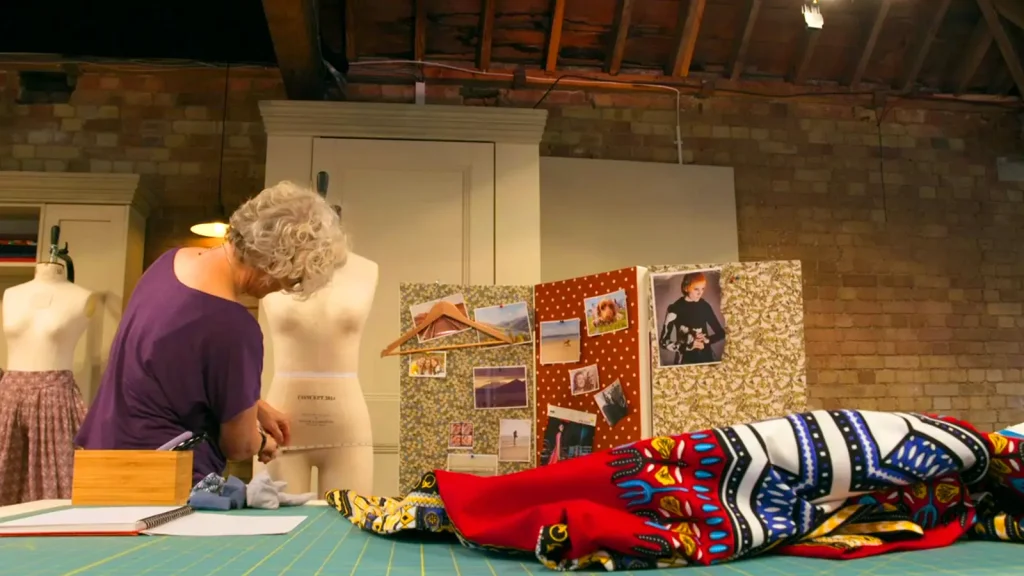
The atmosphere in the sewing room was a blend of excitement and nervous anticipation as the contestants maneuvered through the task. The rhythmic hum of the machines, the meticulous measuring, and the hopeful glances towards the judges were the order of the day.
Judges Patrick and Esme, with their vast reservoir of experience, provided invaluable feedback. Their eyes scoured for detail, innovation, and the ability to adhere to the guidelines while pushing the creative boundaries.
The challenge was a testament to the evolving narrative of The Great British Sewing Bee, where traditional sewing skills are melded with modern-day creativity to produce garments that tell a story.
Standout Contestants
Episode 7 was a canvas of creativity, and amidst the colorful array of talent, a couple of contestants painted strokes of genius that left an indelible mark. Their understanding of the tasks at hand, combined with a knack for innovation, set them a cut above the rest.
Contestant A’s rendition of the dhoti pants was nothing short of exemplary. The finesse with which they maneuvered through the drapes and seams showcased a profound understanding of the garment’s cultural essence. The modern twist they added was tasteful and resonated well with the judges, earning them a heap of praises.
On the other hand, Contestant B’s take on the origami challenge was a masterclass in precision and design. Their ability to translate the geometric intricacy of origami into fabric was awe-inspiring. The final piece was a harmonious blend of traditional technique and contemporary fashion, which garnered accolades from the judges.
Their efforts were not only a triumph in craftsmanship but also a testament to the endless possibilities that lay in the confluence of tradition and modernity. Through their exemplary performances, they not only secured their places in the competition but also left a lasting impression, setting a high bar for the episodes to come.
Struggling Contestants
Despite the vibrant display of talent in Episode 7, a few contestants found themselves entangled in the threads of intricacy that the challenges unfurled. The journey through the diverse tapestry of cultural fashion was not smooth for everyone, and some struggled to keep their designs afloat amidst the turbulent sea of expectations and competition.
Contestant C, for instance, faced a tough time maneuvering through the Dashiki transformation challenge. Their attempt to modernize the traditional garment faltered as they struggled to balance respect for the cultural essence with contemporary flair. The judges pointed out the lack of cohesion in the design, which veered away from the original essence of the Dashiki.
Similarly, Contestant D’s encounter with the origami challenge turned into a bout of complexity. The translation of paper folding techniques to fabric proved to be a herculean task. Their final piece, though ambitious, fell short on the precision and finesse that the challenge demanded. The judges, while appreciating the effort, highlighted the areas that needed refinement, offering a blend of encouragement and constructive critique.
These struggles were reflective not just of the high-pressure environment of the competition, but also the steep learning curve that comes with venturing into the unknown terrains of global fashion. They provided both the contestants and the viewers a glimpse into the relentless pursuit of perfection and the resilience required to thrive in the ever-evolving world of fashion.
Conclusion
Episode 7 of The Great British Sewing Bee Season 5 was a remarkable journey through the labyrinth of global fashion. The contestants, under the watchful eyes of Patrick and Esme, navigated through the riveting challenges that tested not only their sewing prowess but also their ability to weave cultural respect with modern-day creativity. The Dhoti Pants, Dashiki Transformation, and Origami challenges were not merely sewing tasks; they were a celebration of the rich tapestry of global fashion traditions. They provided a platform for the contestants to showcase their understanding and appreciation of diverse cultural attire, blending historical essence with contemporary design.
The episode was a roller-coaster of emotions, with the highs of impeccable craftsmanship showcased by standout contestants and the lows faced by those who struggled with the complex intricacies of the challenges. Each stitch, fold, and cut was a lesson in precision, creativity, and resilience, depicting the essence of what makes The Great British Sewing Bee a cherished gem in the realm of competitive reality TV. The critiques and praises from the judges were guiding lights, helping the contestants refine their skills, learn from their missteps, and strive for perfection in their creative journey.
As the dramatic climax unfolded, revealing the contestant bidding adieu to the sewing room, it left a bittersweet taste. The camaraderie among the contestants, the shared passion for sewing, and the collective aspiration to grow through the competition were evident. The episode left viewers with a satiated palate, yet a yearning for more creative exploits in the episodes to come. The journey of The Great British Sewing Bee continues to be an inspiring ode to the boundless realm of creativity that lies at the heart of sewing.
FAQ – The Great British Sewing Bee Season 5 Episode 7
What were the main challenges in Episode 7 of The Great British Sewing Bee Season 5?
The main challenges were the Dhoti Pants Challenge, Dashiki Transformation Challenge, Origami Challenge, and an additional challenge that tested the contestants’ versatility and adaptability.
How will the episode help prepare the eventual winner?
The international theme developed crucial versatility, and the tough judging refined their skills.
What is the history behind dhoti pants?
Dhoti pants are based on a traditional Indian garment dating back thousands of years. They were made from a simple wrapped rectangular cloth.
What fabric would be best for making origami couture?
The judges recommended a fabric with enough body to hold crisp folds and pleats, like cotton or silk.
How did the dashiki become significant in West African culture?
Its bold colors and prints made it an iconic cultural symbol over time.
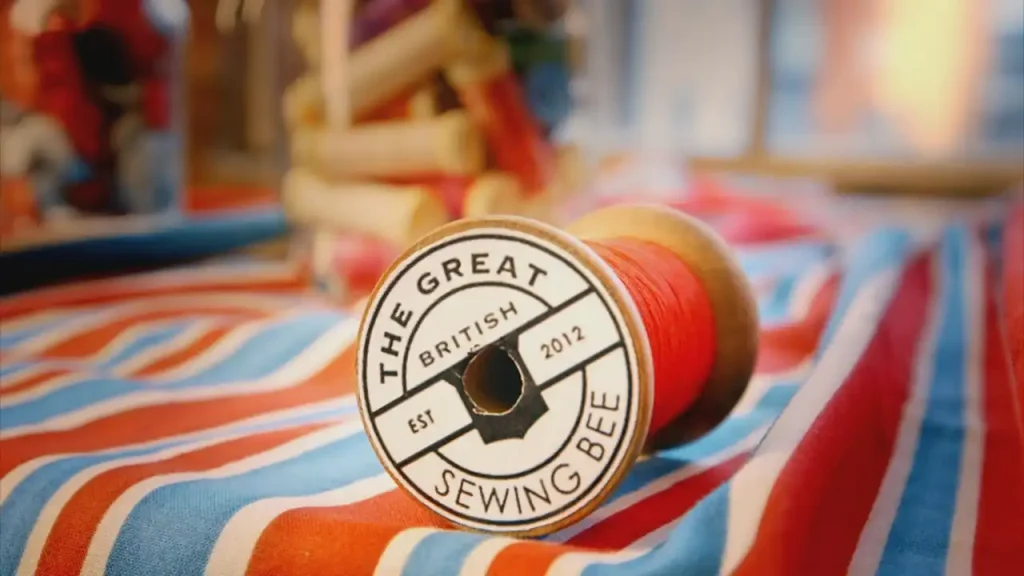
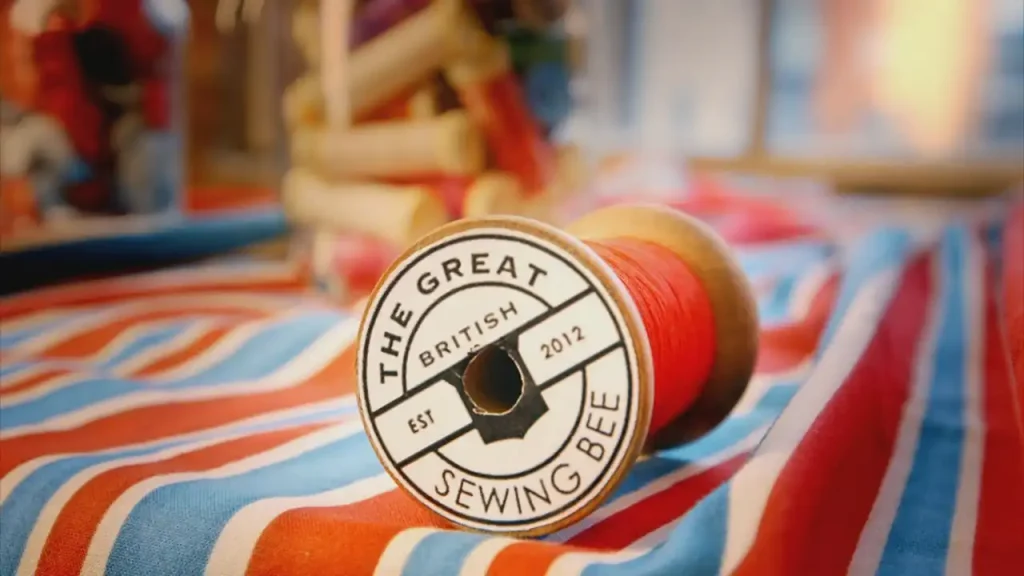
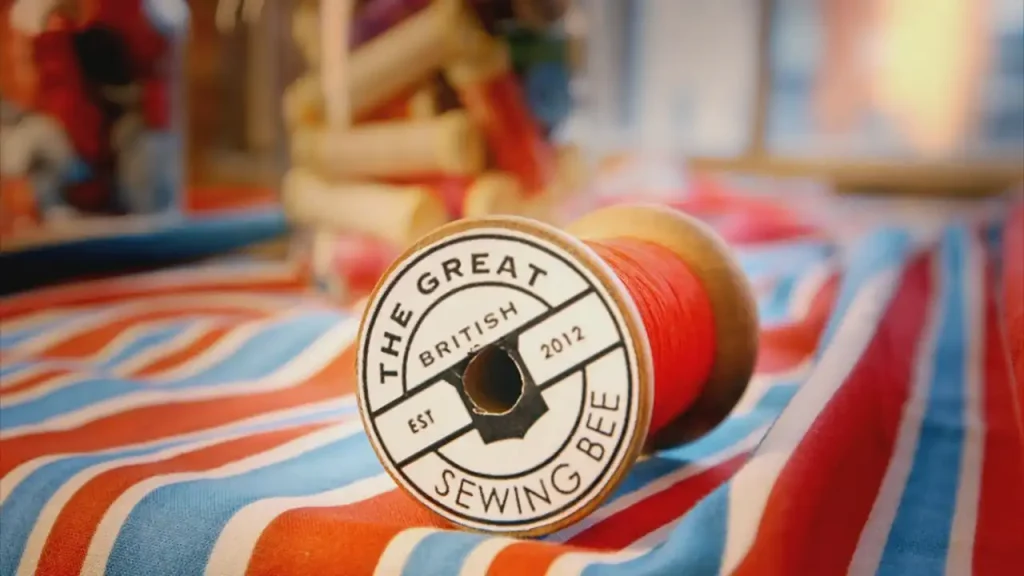

Riccardo’s origami top was perfection! He really gave you the essence of origami. The fact that he used a sheer fabric made the top look incredibly delicate. That was without a doubt the best garment of the week!